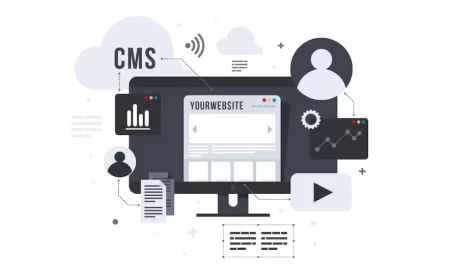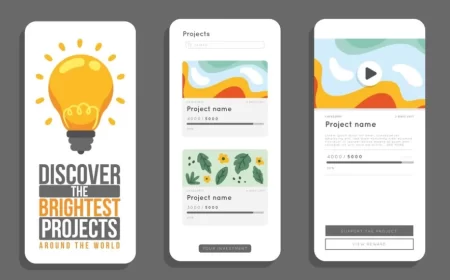In an increasingly interconnected world, the internet has become a global marketplace and a universal source of information. While English remains a dominant language online, a significant portion of the world’s population speaks other languages. For businesses, organizations, and content creators aiming to maximize their reach, relevance, and impact, a multi-language website is no longer just an option but a strategic imperative.
A multi-language website is a single website that offers its content in two or more languages, allowing users to choose their preferred language for browsing. This goes beyond simple translation; it involves a thoughtful approach to internationalization, localization, and user experience to cater effectively to diverse linguistic and cultural audiences.
This comprehensive guide will delve into the critical aspects of multi-language websites, exploring their benefits, key considerations for planning and implementation, various technical strategies, and essential best practices to ensure a successful global online presence.
Why Invest in a Multi-Language Website? The Compelling Benefits
Building a website that speaks to users in their native tongue offers a multitude of advantages that can significantly impact your online success:
-
Expanded Global Reach and Market Access
- Tap into New Markets: Directly access non-English speaking markets, which often represent vast, underserved audiences with significant purchasing power.
- Increased Traffic: By offering content in multiple languages, your website becomes discoverable by users searching in those languages, leading to a substantial increase in organic search traffic.
- Competitive Advantage: Stand out from competitors who only offer content in a single language, positioning your brand as globally-minded and customer-centric.
-
Enhanced User Experience (UX) and Engagement
- Improved Comprehension: Users can fully understand your products, services, or content when presented in their native language, reducing ambiguity and confusion.
- Increased Comfort and Trust: People naturally feel more comfortable and trusting when interacting with content in their own language. This fosters a stronger connection with your brand.
- Higher Conversion Rates: When users understand your offerings clearly and feel a sense of trust, they are far more likely to convert, whether that means making a purchase, signing up for a newsletter, or filling out a form. Studies consistently show higher conversion rates on localized websites.
- Reduced Bounce Rates: Users are less likely to leave your site immediately if they find content they can understand and relate to.
-
Boosted Search Engine Optimization (SEO) Performance
- Targeted Keyword Rankings: Rank for keywords in multiple languages, expanding your search visibility beyond a single linguistic market.
- Hreflang Tags: Properly implemented
hreflangtags (discussed below) tell search engines which language version of a page to serve to users in different regions, preventing duplicate content issues and ensuring the right content reaches the right audience. - Local SEO Opportunities: For businesses with physical locations, a multi-language site can enhance local search visibility in different regions.
- Increased Backlinks: High-quality, multi-language content is more likely to attract backlinks from relevant international websites and communities, further boosting your domain authority.
-
Stronger Brand Image and Credibility
- Global Brand Perception: Project an image of a sophisticated, international, and inclusive brand that values its diverse customer base.
- Cultural Sensitivity: Demonstrating an effort to communicate in a user’s native language shows respect for their culture, building stronger relationships and loyalty.
- Professionalism: A well-executed multi-language website reflects professionalism and attention to detail.
-
Improved Customer Support and Communication
- Reduced Misunderstandings: Clear communication in the customer’s preferred language can reduce support queries stemming from misunderstandings and improve overall satisfaction.
- Better Feedback: Users are more likely to provide detailed feedback or reviews when they can express themselves in their native language.
Key Considerations When Planning a Multi-Language Website
Building a successful multi-language website requires careful planning that goes beyond simple translation. Here are the crucial factors to consider:
-
Target Audience and Languages
- Who are you trying to reach? Identify your key international markets and the primary languages spoken there. Don’t just translate into the most common languages; focus on those relevant to your business goals.
- Prioritization: You don’t need to launch all languages at once. Prioritize based on market opportunity, existing traffic data, and resource availability.
- Dialects and Regional Variations: Consider if you need to account for different dialects (e.g., Spanish for Spain vs. Latin America, English for US vs. UK).
-
Translation vs. Localization
- Translation: The literal conversion of text from one language to another. While necessary, it’s often insufficient.
- Localization: Adapting your content, design, and functionality to meet the linguistic, cultural, and technical requirements of a specific target market. This includes:
- Cultural Nuances: Adapting imagery, colors, and examples to be culturally appropriate and resonant.
- Date and Time Formats:
MM/DD/YYYYvs.DD/MM/YYYY. - Currency: Displaying prices in local currency and supporting local payment methods.
- Units of Measurement: Imperial vs. Metric.
- Legal Requirements: Ensuring compliance with local laws and regulations (e.g., privacy policies, terms of service).
- Tone of Voice: Adapting the brand’s tone to be appropriate for the target culture.
- Professional Translation Services: Avoid machine translation for critical content. Invest in professional human translators who are native speakers and understand your industry and target audience. Consider using Translation Memory (TM) and Terminology Management (TM) tools for consistency and cost-effectiveness.
-
Content Management Strategy
- CMS Capabilities: Does your current CMS (e.g., Webflow, WordPress, etc.) support multi-language content out-of-the-box, or will it require plugins/custom solutions? Webflow, for instance, has robust CMS capabilities that can be leveraged for multi-language content, often requiring careful structuring.
- Content Duplication vs. Linked Content: How will you manage content across languages? Will each language have its own distinct entry, or will they be linked for easier updates?
- Workflow for Updates: Establish a clear process for updating content in all languages simultaneously or sequentially to ensure consistency.
-
User Experience (UX) for Language Switching
- Prominent Language Switcher: Make it easy for users to find and switch languages. Common placements include the header, footer, or a floating element.
- Clear Language Names: Use full language names (e.g., “English,” “Español,” “Deutsch”) rather than just flags (flags can be ambiguous and culturally insensitive).
- Automatic Detection (with override): Consider automatically detecting a user’s preferred language based on their browser settings or IP address, but always provide an easy way for them to override this default.
Implementation Strategies: How to Structure Your Multi-Language Website
The technical architecture of your multi-language website significantly impacts SEO, user experience, and ease of management. Here are the primary strategies:
-
Separate Domains (gTLDs)
- Example:
yourbrand.com(English),yourbrand.de(German),yourbrand.fr(French). - Pros:
- Clear geographic targeting and strong geotargeting signals for search engines.
- Allows for completely separate hosting, design, and content strategies per region/language.
- Can build strong local authority for each domain.
- Cons:
- Most expensive to set up and maintain (multiple domains, hosting, SSL certificates).
- Requires building and managing multiple websites.
- SEO efforts are siloed; link equity doesn’t easily transfer between domains.
- Can dilute overall brand authority if not managed carefully.
- Best For: Large enterprises with significant resources, distinct regional marketing strategies, or brands that need a very strong local presence in specific countries.
- Example:
-
Subdomains
- Example:
en.yourbrand.com(English),de.yourbrand.com(German),fr.yourbrand.com(French). - Pros:
- Easier to set up and manage than separate gTLDs (often on the same hosting account).
- Clear language/region indication in the URL.
- Search engines generally treat subdomains as separate entities, allowing for some geotargeting.
- Cons:
- May still require more complex SEO and analytics setup than subdirectories.
- Link equity is somewhat diluted compared to subdirectories (though better than gTLDs).
- Can be perceived as separate sites by some users.
- Best For: Businesses targeting specific countries or languages, but with a more unified brand across regions. Often used when content is highly distinct per language.
- Example:
-
Subdirectories (Recommended for Most Businesses)
- Example:
yourbrand.com/en/(English),yourbrand.com/de/(German),yourbrand.com/fr/(French). - Pros:
- SEO Benefits: Strongest option for consolidating SEO authority. All language versions benefit from the main domain’s authority and link equity.
- Cost-Effective: Easiest to set up and manage (single domain, single hosting).
- Simplified Analytics: Easier to track all language versions under one Google Analytics property.
- User-Friendly: Clear and intuitive URL structure for users.
- Webflow Compatibility: Often the most straightforward approach to implement within a platform like Webflow, leveraging its CMS and custom code capabilities.
- Cons:
- Less explicit geographic targeting than gTLDs (relies more heavily on
hreflangand Google Search Console settings). - Requires careful URL structure planning.
- Less explicit geographic targeting than gTLDs (relies more heavily on
- Best For: The vast majority of businesses and organizations, especially those using platforms like Webflow, who want a unified brand and consolidated SEO efforts.
- Example:
-
URL Parameters (Least Recommended)
- Example:
yourbrand.com?lang=en,yourbrand.com?lang=de. - Pros: Easiest to implement technically.
- Cons:
- Poor SEO: Search engines often struggle to crawl and index content based on URL parameters, leading to duplicate content issues.
- Poor User Experience: URLs are less readable and shareable.
- Not Recommended for multi-language sites.
- Example:
Essential Technical Aspects for Multi-Language Websites
Regardless of your chosen URL structure, certain technical elements are critical for search engine discoverability and proper user routing:
-
Hreflang Tags
- Purpose:
hreflangattributes in your HTML tell search engines (like Google and Yandex) about the different language and regional versions of your content. This helps search engines serve the correct language version to users based on their location and language preferences. - Implementation: For every page, you must include
hreflangtags for all available language versions, including the page itself.<link rel="alternate" href="https://www.yourbrand.com/en/" hreflang="en" /> <link rel="alternate" href="https://www.yourbrand.com/de/" hreflang="de" /> <link rel="alternate" href="https://www.yourbrand.com/fr/" hreflang="fr" /> <link rel="alternate" href="https://www.yourbrand.com/en-us/" hreflang="en-us" /> <!-- For US English --> <link rel="alternate" href="https://www.yourbrand.com/x-default/" hreflang="x-default" /> <!-- Default/fallback page -->The
x-defaulttag specifies the default page when no other language/region matches the user’s settings. - Placement: These tags should be placed in the
<head>section of every page. - Consistency: Every page must list all its alternate language versions, including itself. This is crucial for
hreflangto work correctly.
- Purpose:
-
Language Switcher (User Interface Element)
- Visibility: Make the language switcher easily discoverable. Common locations are the header, footer, or a persistent sidebar.
- Clarity: Use clear, full language names (e.g., “English,” “Français,” “Deutsch”) instead of flags, which can be ambiguous or culturally insensitive.
- Functionality: When a user selects a language, the website should load the corresponding language version of the current page, not just redirect to the homepage.
-
Content Management System (CMS) Integration
- Webflow’s Approach: Webflow doesn’t have a native “multi-language switch” built-in. However, its powerful CMS and custom code capabilities allow for effective multi-language implementations, typically using subdirectories.
- CMS Collections: You can create separate CMS Collections for each language (e.g., “Blog Posts – English,” “Blog Posts – German”) or use a single Collection with fields for each language’s content. The latter often requires more advanced conditional visibility or custom code to display the correct language.
- Localization Apps/Plugins: For Webflow, third-party solutions like Weglot, Localize.js, or custom integrations are often used to handle the translation and display logic, automatically generating subdirectories and managing
hreflangtags.
- Content Duplication: For optimal SEO and content control, often the best approach is to have distinct content entries for each language, even if the core message is the same. This allows for specific keyword targeting and localization.
- Webflow’s Approach: Webflow doesn’t have a native “multi-language switch” built-in. However, its powerful CMS and custom code capabilities allow for effective multi-language implementations, typically using subdirectories.
-
Google Search Console (GSC)
- International Targeting: Use Google Search Console to set international targeting (if using gTLDs or subdomains) and monitor any
hreflangerrors. - Sitemaps: Submit separate sitemaps for each language version, or a single sitemap that includes all language URLs.
- International Targeting: Use Google Search Console to set international targeting (if using gTLDs or subdomains) and monitor any
Best Practices for a Successful Multi-Language Website
To ensure your multi-language website truly resonates with global audiences and performs well in search engines, adhere to these best practices:
- Prioritize Human Translation and Localization:
- Never rely solely on machine translation for professional content. Hire native-speaking professional translators who understand your industry and target audience.
- Go beyond direct translation to truly localize content, adapting for cultural nuances, idioms, humor, and local conventions (dates, currencies, units of measure).
- Consider tone of voice: how your brand speaks might need to adjust slightly for different cultural contexts.
- Maintain Consistent URL Structures:
- Stick to one of the recommended URL structures (subdirectories or subdomains) consistently across your entire site.
- Ensure URLs are clean, readable, and include the language indicator (e.g.,
/en/,/de/).
- Implement Hreflang Tags Flawlessly:
- This is arguably the most critical SEO element for multi-language sites. A single error can cause major issues.
- Ensure every page has
hreflangtags pointing to all its alternate language versions, including itself. - Use the
x-defaulttag for your default or fallback language page. - Validate your
hreflangimplementation using tools like Google Search Console or onlinehreflangvalidators.
- Make Language Switching Intuitive:
- Place the language switcher in a prominent, consistent location (e.g., top right corner, footer).
- Use clear language names (e.g., “English,” “Français”) instead of flags.
- Ensure the switcher takes users to the corresponding page in the selected language, not just the homepage.
- Optimize for Local SEO:
- Conduct keyword research for each target language. Keywords that work in one language may not translate directly or have the same search volume in another.
- If you have physical locations, ensure local business listings (Google My Business) are localized.
- Consider Cultural Design Elements:
- Review imagery, colors, and design elements to ensure they are culturally appropriate and appealing to your target audience. What is positive in one culture might be negative in another.
- Be mindful of text expansion/contraction when translating. Some languages require more space than English, which can break layouts if not accounted for.
- Manage Content Efficiently:
- Choose a CMS solution that streamlines multi-language content management.
- Establish a clear workflow for content creation, translation, review, and publishing across all languages.
- Regularly audit content to ensure all language versions are up-to-date and consistent.
- Monitor Performance in All Regions:
- Use analytics tools (like Google Analytics) to track traffic, engagement, and conversions for each language version separately.
- Monitor search rankings in different countries and languages.
- Pay attention to user feedback from different regions.
- Avoid Automatic Redirection Based on IP Address:
- While tempting, automatically redirecting users based on IP address can be frustrating. Users might be traveling, or their IP might not accurately reflect their language preference.
- If you implement auto-detection, always provide a clear and easy way for users to switch to their preferred language.
Conclusion
Building a multi-language website is a significant undertaking, but the benefits of expanding your global reach, enhancing user experience, and boosting SEO performance are immense. It transforms your online presence from a local storefront into a truly global platform. By carefully planning your strategy, choosing the right technical implementation, investing in professional localization, and adhering to best practices, you can create a powerful multi-language website that resonates with diverse audiences worldwide, fosters trust, and drives sustainable growth for your business.












